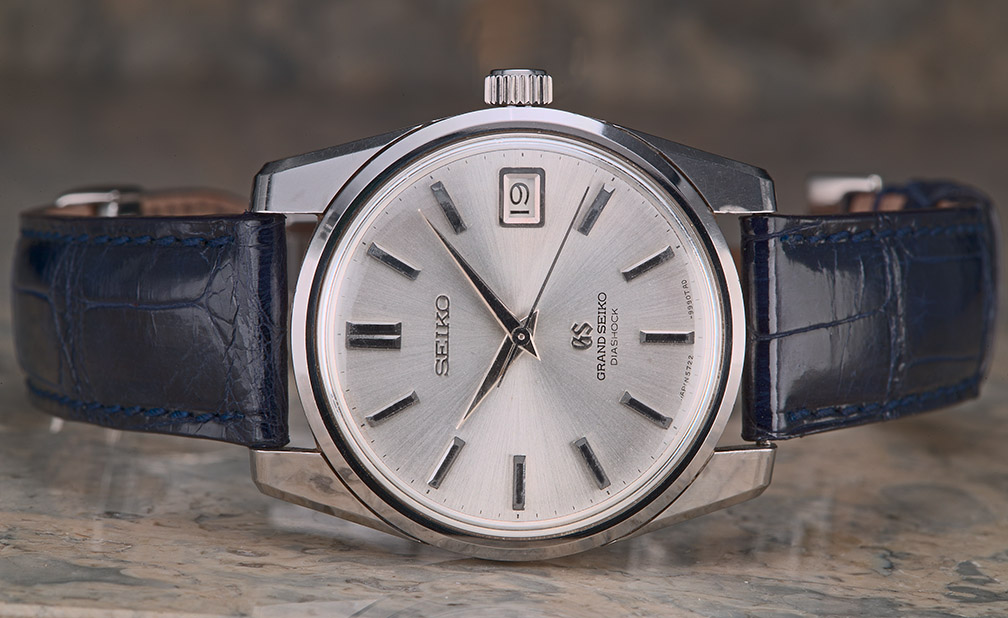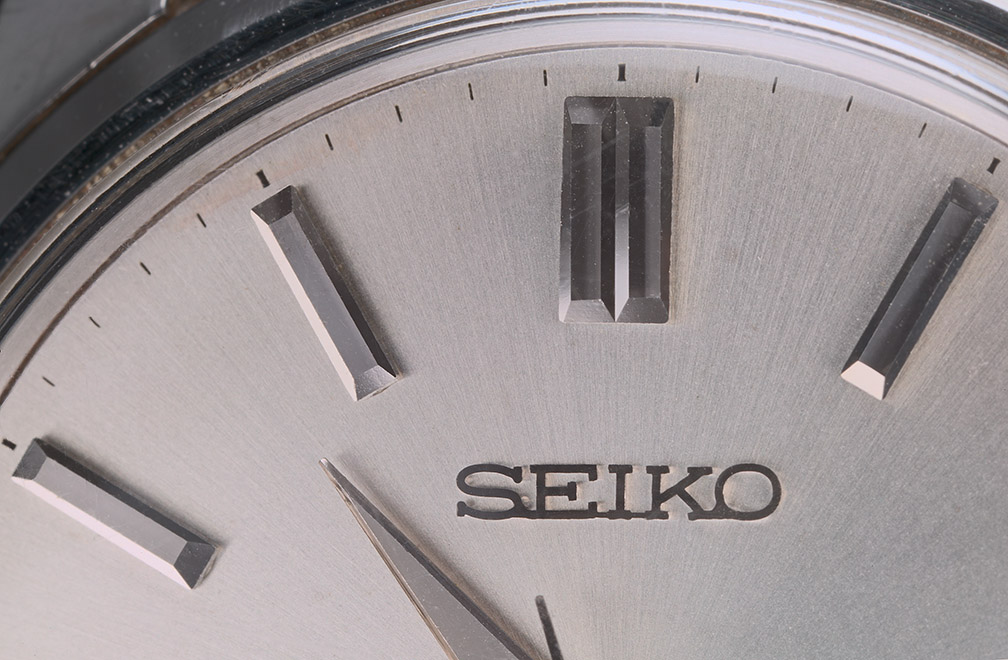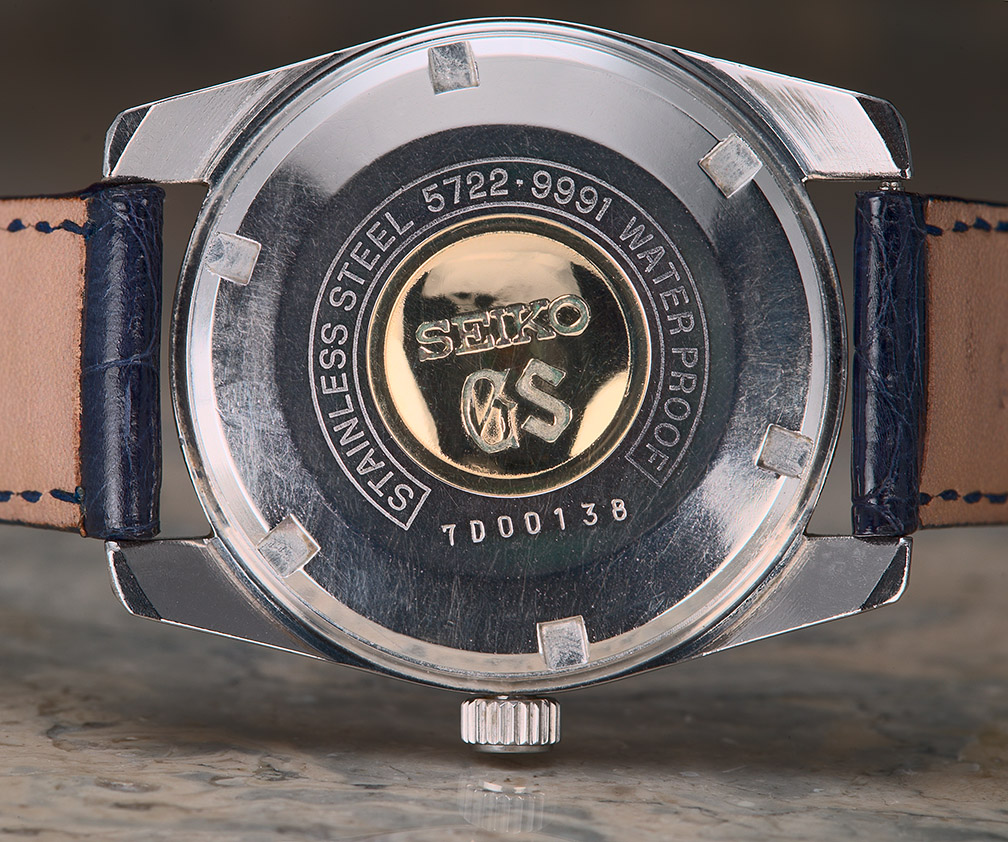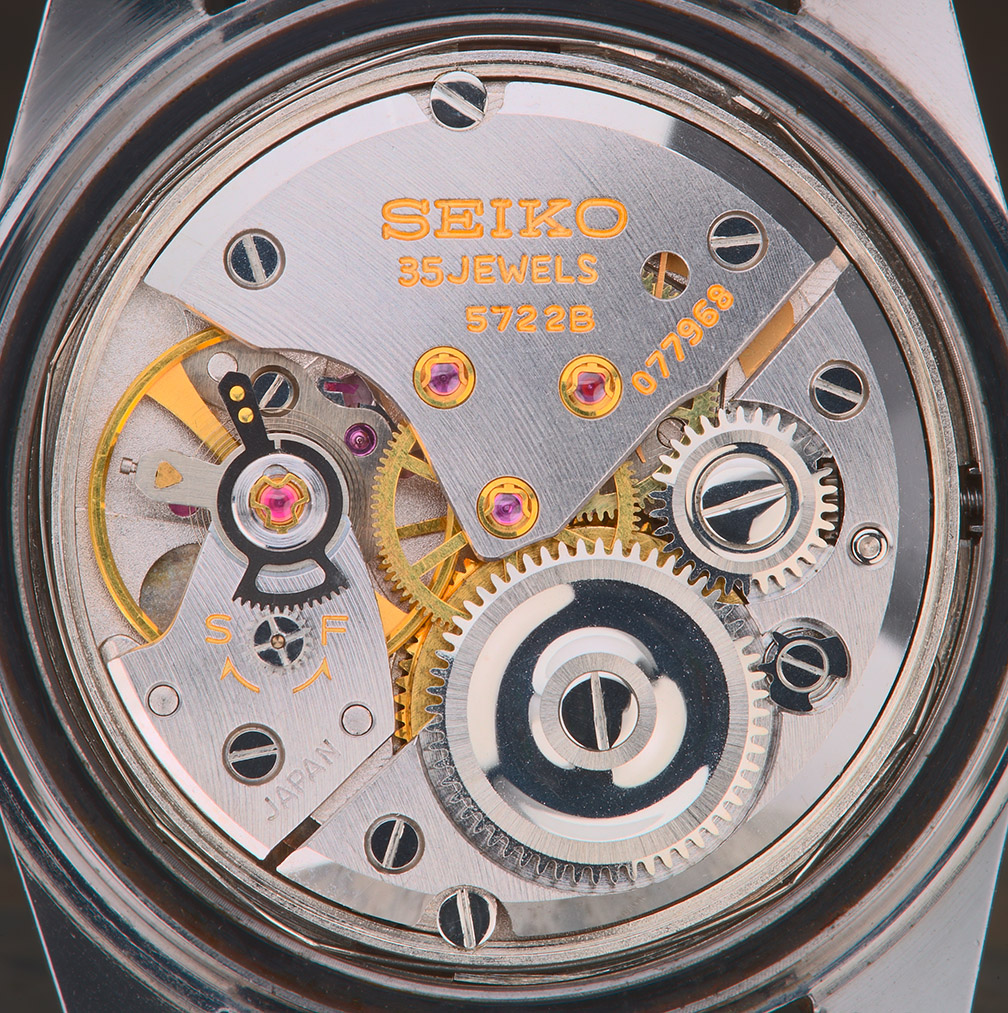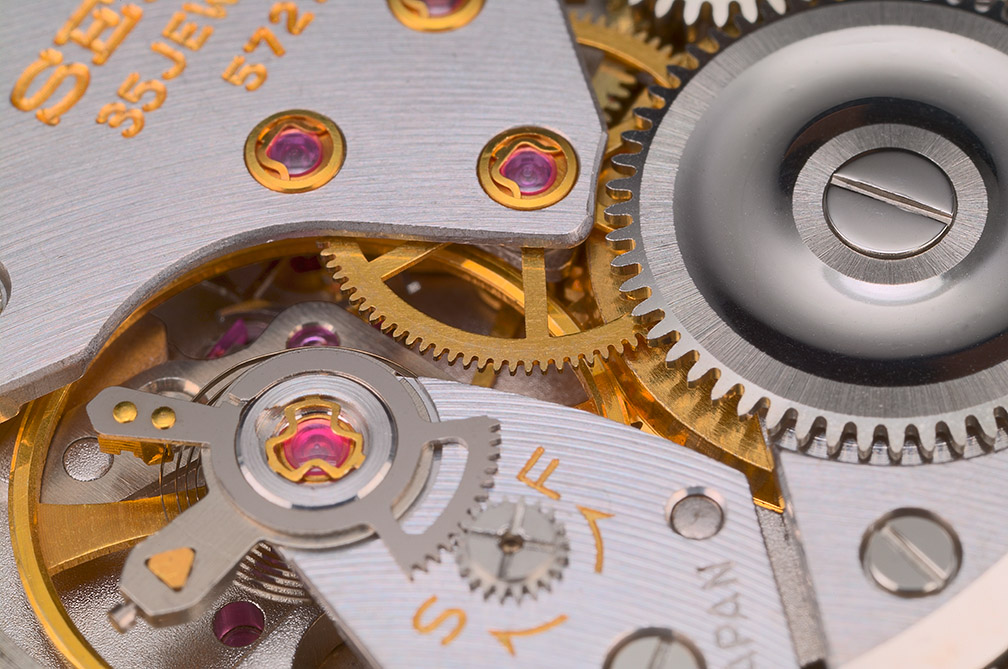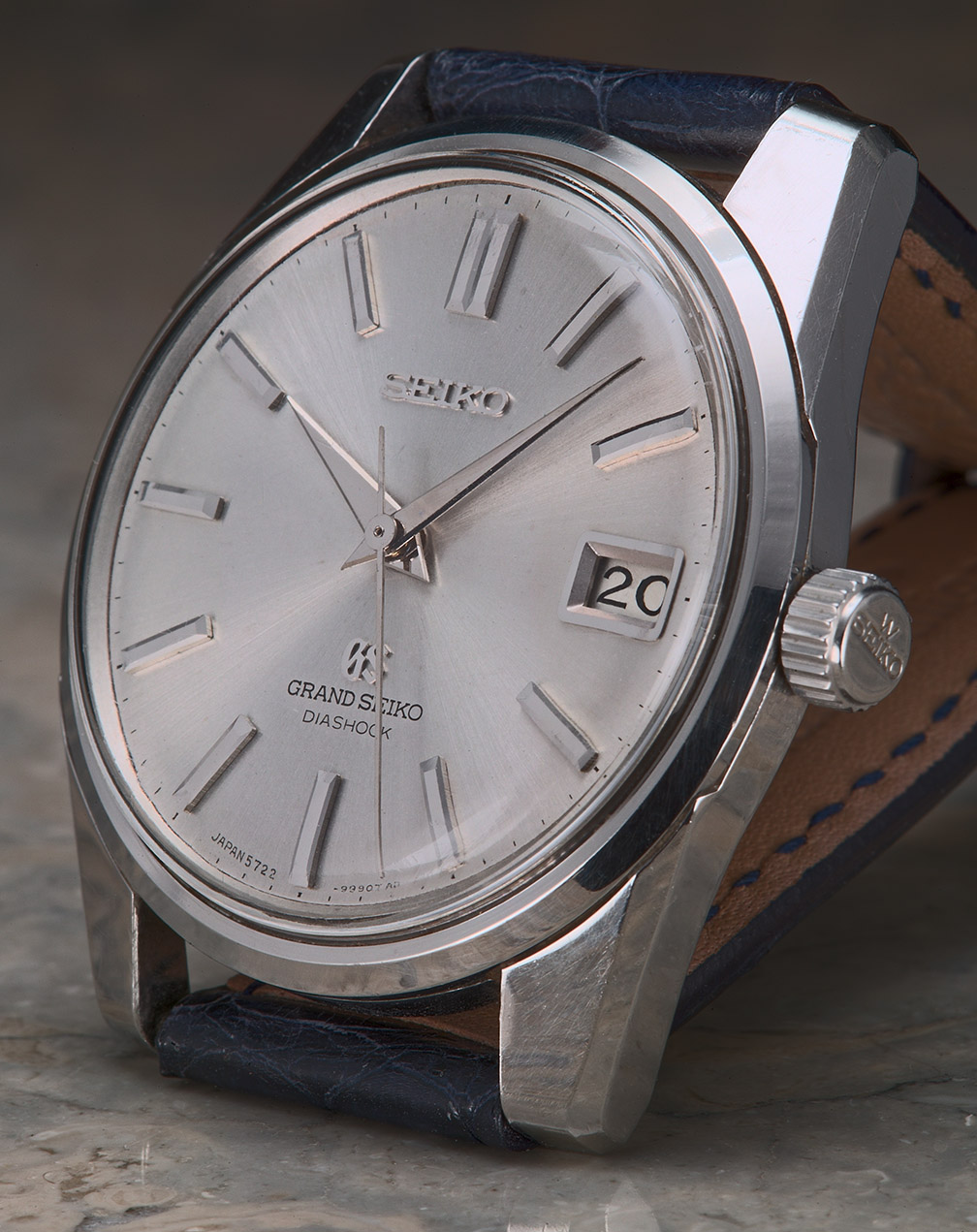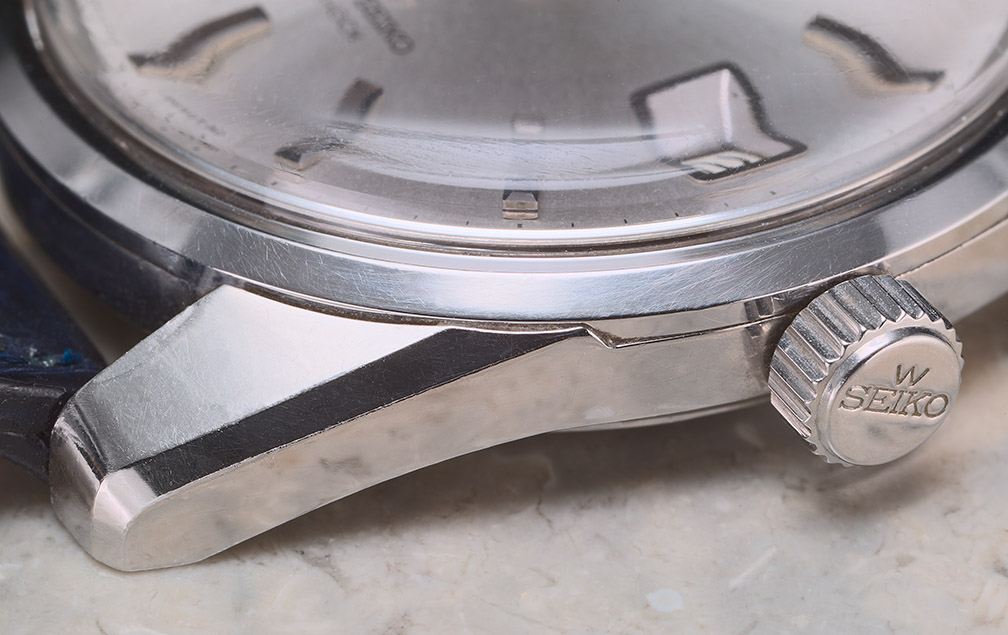In Japan however, the leading watchmaking firm, Seiko, was preparing to demonstrate that they could accomplish world-class chronometry, even if that required competing on unfavorable terms and in a hostile territory. The story of their shocking success at the Observatory competitions is presented in a detailed and authoratative article by K-Seiya, but the conclusion is that by 1968 Seiko had agreed to stop labeling their watches "chronometers" (regardless of their timekeeping quality), instead adhering to a rather more-rigorous in-house standard ("Grand Seiko"), and the Swiss...abandoned the competitions!
I would distinguish the various Seiko chronometers in this fashion: the original low-beat (18k or 19.8kbph), and high-beat (36kbph), the very rare Observatory and VFA (very fine adjustment) chronometers, the mass-produced GSs of the 1970s, and finally the current lineup from 1998 onwards. Each endeavor holds its own place in the history: The first international successes (low-beat), the subsequent designs to in-house chronometer standards (high-beat), the pinnacles (Observatory and VFA), the perfection of factory methods (1970s) and finally the revival (1998). Regardless of which model and era one might choose, each is made to the highest standards; dials with sculptured and high-polish hands and markers, hand-finished cases (and sometimes bracelets), and exclusive movements assembled and tested by Seiko's elite watchmakers are the practice.
While the Swiss manufactures routinely used their high-grade chronometers and any competition successes in their marketing to create a halo around their entire product line, Seiko has historically confined their finest offerings to their home market, only venturing into Europe and North America in the last couple of years with a tiny selection of Credors and Grand Seikos. Similarly, the vintage versions are highly-regarded at home, and almost unknown elsewhere. Despite this situation, these watches deserve acknowledgement for their accomplihsments in 20th-century chronometry, and appreciation of their aesthetics and movements offers special reward to those familiar with their European chronometer counterparts.
A few other watches relating to this subject:
|
|
|
|
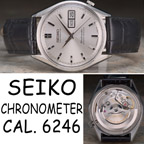
|
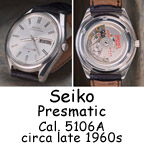
|
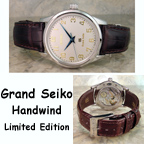
|
The present watch is a Grand Seiko from circa 1966. GSs were large and robust watches for their era, and at 37mm diameter (exclusive of crown) and about 9.5mm thick, this one is no exception. The thick, sculptured lugs extend far into the sides of the case and create a unique shape, somewhere between round and tonneau. The hands and applied markings are outstandingly formed and finished, and their design is still used on the Seiko GS today, some 40 years later!
